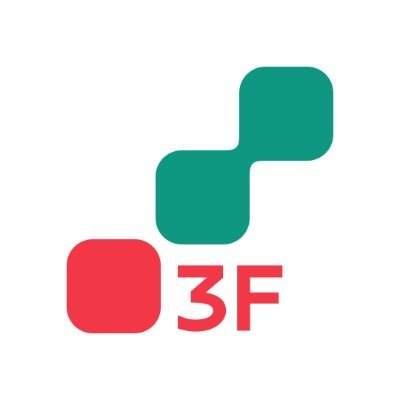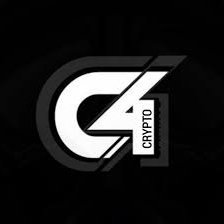Цена 0x
в USD$0,2291
-$0,0155 (-6,34 %)
USD
Токен не найден. Проверьте название и повторите попытку.
Рыночная капитализация
$195,13 млн
Объем в обращении
848,4 млн / 1 млрд
Рекордная цена
$2,600
Объем за 24ч
$17,51 млн
3.8 / 5


О 0x
ZRX (0x) — это криптовалюта, которая лежит в основе децентрализованного протокола обмена, созданного для обеспечения бесперебойного и эффективного трейдинга токенами. Разработанный на базе Ethereum, 0x позволяет проводить одноранговые сделки без посредников, снижая затраты и повышая безопасность. Токен ZRX используется для управления протоколом: его держатели могут голосовать за обновления и улучшения, что гарантирует развитие сети в децентрализованном формате.
0x широко применяется в децентрализованных финансах (DeFi), включая торговые площадки, сервисы кредитования и маркетплейсы NFT, что делает его ключевым игроком в блокчейн-экосистеме. Устраняя посредников, 0x помогает пользователям сохранять контроль над своими активами, обеспечивая при этом быстрые и недорогие сделки. Для новичков в мире криптовалют ZRX представляет собой фундаментальный элемент инфраструктуры, поддерживающей более открытую и доступную финансовую систему.
Создано ИИ
DeFi
Уровень 2

Последний аудит: 14 мая 2021 г., (UTC+8)
Дисклеймер
Информация о социальных сетях на этой странице («Информация»), в том числе публикации из X и статистика от LunarCrush, предоставлена третьими сторонами и приводится только для справки. OKX не гарантирует качество и точность Информации. Статья не отражает взглядов OKX и не является инвестиционным советом и рекомендацией, предложением или призывом к покупке, продаже и хранению цифровых активов, а также финансовым, бухгалтерским, юридическим или налоговым советом. Цифровые активы, в том числе стейблкоины и NFT, сопряжены с высокими рисками и волатильностью. Цена и доходность цифровых активов не фиксирована и может в любой момент измениться.
OKX не дает рекомендаций по инвестированию и хранению активов. Тщательно оцените свою финансовую ситуацию и определите, подходит ли вам торговля и владение цифровыми активами. По вопросам, связанным с вашими конкретными обстоятельствами, обращайтесь к специалистам в области законодательства, налогов или инвестиций. С подробностями можно ознакомиться, изучив Условия использования и Предупреждение о рисках. Переходя на сайты третьих сторон («Сторонние сайты»), вы принимаете их условия использования. OKX и ее партнеры («OKX») не связаны с владельцами и руководителями Сторонних сайтов, если иное не указано в письменной форме. Вы соглашаетесь с тем, что OKX не несет ответственности за убытки, ущерб и любые другие последствия использования Сторонних сайтов. Помните, что использование Сторонних сайтов может привести к полной или частичной потере активов. Продукт может быть доступен не во всех юрисдикциях.
OKX не дает рекомендаций по инвестированию и хранению активов. Тщательно оцените свою финансовую ситуацию и определите, подходит ли вам торговля и владение цифровыми активами. По вопросам, связанным с вашими конкретными обстоятельствами, обращайтесь к специалистам в области законодательства, налогов или инвестиций. С подробностями можно ознакомиться, изучив Условия использования и Предупреждение о рисках. Переходя на сайты третьих сторон («Сторонние сайты»), вы принимаете их условия использования. OKX и ее партнеры («OKX») не связаны с владельцами и руководителями Сторонних сайтов, если иное не указано в письменной форме. Вы соглашаетесь с тем, что OKX не несет ответственности за убытки, ущерб и любые другие последствия использования Сторонних сайтов. Помните, что использование Сторонних сайтов может привести к полной или частичной потере активов. Продукт может быть доступен не во всех юрисдикциях.
Динамика цен 0x
Прошедший год
-35,92 %
$0,36
3 месяца
+7,40 %
$0,21
30 дней
-5,49 %
$0,24
7 дней
-15,37 %
$0,27
0x в соцсетях

🚀 @3fSignal Криптовалютный фильтр - платформа для фильтрации рынка криптовалют на основе многомерных алгоритмов ИИ | 2025/9/24
1. $A2Z $0.006560 🟢28.80%
2. $SKY $0.070650 🟢5.10%
3. $CHESS $0.066200 🟢4.93%
4. $ONG $0.158980 🟢2.51%
5. $BAT $0.149000 🟢2.19%
6. $ZRX $0.245600 🟢2.08%
7. $XTZ $0.714000 🟢2.00%
8. $XRPUSDC $2.928600 🟢1.77%
9. $XLM $0.375130 🟢1.33%
10. $YFI $5210.000000 🟢1.07%
🎯 @3fSignal Торговые сигналы
#3fSignal #CryptoSignals #TechnicalAnalysis #Crypto #altcoinseason2025

Спасибо за упоминание @faraj_abut !!

Faraj Abutalibov
Сегодня в #TheBuildersAroundUs мы представляем Kenetic Capital — семейный офис, основанный в Гонконге, с азиатскими корнями и глобальным охватом, который продвигает инновации в блокчейне. @KeneticCapital
Кто они
Kenetic — это семейный офис, сосредоточенный на цифровых активах и стартапах в области блокчейна. Его основатель вошел в криптовалюту в 2013 году, соучредил Ассоциацию Биткойна Гонконга в январе 2014 года и запустил Ethereum HK Meetup в марте 2014 года — первую встречу Ethereum в Азии. С тех пор Kenetic инвестировал в более чем 350 проектов, сочетая раннюю уверенность, капитал и создание сообщества, чтобы помочь основателям масштабироваться на глобальном уровне.
Что они строят
• Рост сообщества — Kenetic совместно организовал хакатон "NIFTY" с партнерами, такими как Coinbase, OKX и Decentraland, поддерживая следующее поколение строителей Web3.
• Сильный портфель — начальные инвесторы в Ethereum, Solana, Polkadot, Render, Worldcoin, Zilliqa, 0x, OmiseGo, ICON, Ripple, Bitcoin, Zcash и сотни других высокоэффективных проектов в области DeFi, масштабируемости и платежей.
• Инфраструктура DeFi — как ключевой инвестор в CrossCurve MetaLayer (ранее EYWA), Kenetic поддерживает единый кросс-цепочный протокол ликвидности и доходности, построенный на Curve, обеспечивая следующее поколение децентрализованных финансов.
Что выделяет их
• Пионеры с 2013 года — рано признали потенциал блокчейна, поддерживая протоколы, которые стали лидерами отрасли.
• Глобальный охват — корни в Азии, но инвестиции и поддержка проектов по всему миру.
• Создатели экосистемы — от соучреждения Ассоциации Биткойна Гонконга до проведения первой встречи Ethereum в Азии, Kenetic активно развивает криптосообщество с самого начала.
Почему они важны
Влияние Kenetic выходит за рамки инвестиций — это о создании основ блокчейн-экономики. Поддерживая более 350 проектов, которые решают проблемы масштабируемости, безопасности и финансовой инклюзии, и начиная многие из самых влиятельных протоколов сегодняшнего дня, Kenetic продолжает формировать долгосрочное будущее Web3.
Следите за новыми материалами в #TheBuildersAroundUs — историями команд, формирующих следующую эру блокчейна.
#Kenetic #TheBuildersAroundUs


Руководства
Узнайте, как купить 0x
На первый взгляд, мир криптовалют может показаться сложным и запутанным, но купить криптовалюту проще, чем вы думаете
Прогноз цен 0x
Сколько будет стоить 0x в течение следующих нескольких лет? Изучайте мнения сообщества и делайте прогнозы.
Просмотр динамики цен 0x
Отслеживайте динамику цен 0x, чтобы контролировать доходность активов. В таблице ниже представлены их стоимость при открытии и закрытии рынка, максимумы, минимумы и объем торгов.

Вопросы и ответы о 0x
Сейчас курс 0x составляет $0,2291. На этой странице вы найдете анализ динамики 0x. Изучите актуальные графики и прогноз цены 0x на 2025 год и далее на OKX.
Криптовалюты (как 0x) — это цифровые активы, работающие в общедоступном онлайн-реестре, называемом «блокчейн». На OKX вы найдете множество криптовалют с подробной статистикой в реальном времени — графиками объема и курса и др.
Интерес к децентрализованным финансам значительно возрос в 2008 году на фоне мирового финансового кризиса. Тогда Bitcoin стал инновационным решением, предложившим надежный цифровой актив, работающий в децентрализованной сети. С тех пор в мире появились тысячи новых токенов, в том числе и 0x.
Страница прогноза цен на 0x отображает прогнозы цен на криптовалюту и помогает определять целевую цену.
Откройте для себя 0x
0x (ZRX) — это протокол, позволяющий осуществлять децентрализованный обмен токенами и активами, выпущенными на блокчейне Ethereum. С помощью 0x разработчики могут создавать собственные приложения для обмена криптовалют с широким набором функций, например, внебиржевой торговлей токенами, выпущенными на блокчейне Ethereum. Токены ZRX используются для реализации децентрализованного управления протоколом 0x, который позволяет пользователям голосовать по улучшениям базовых смарт-контрактов.
Раскрытие данных ESG
Нормативные предписания ESG (экологические, социальные и управленческие факторы) в сфере криптоактивов направлены на снижение их экологического воздействия (например, за счет сокращения энергоемкого майнинга), повышение прозрачности и обеспечение этичного управления. Эти меры помогают интегрировать криптоиндустрию в более широкую стратегию устойчивого развития и учитывать общественные интересы. Нормативные предписания способствуют соответствию стандартам, снижению рисков и укреплению доверия к цифровым активам.
Сведения об активах
Название
OKCoin Europe Ltd
Соответствующий идентификатор юридического лица
54930069NLWEIGLHXU42
Название криптовалютного актива
0x Protocol Token
Механизм консенсуса
0x Protocol Token is present on the following networks: Avalanche, Ethereum, Gnosis Chain, Solana.
The Avalanche blockchain network employs a unique Proof-of-Stake consensus mechanism called Avalanche Consensus, which involves three interconnected protocols: Snowball, Snowflake, and Avalanche. Avalanche Consensus Process 1. Snowball Protocol: o Random Sampling: Each validator randomly samples a small, constant-sized subset of other validators. Repeated Polling: Validators repeatedly poll the sampled validators to determine the preferred transaction. Confidence Counters: Validators maintain confidence counters for each transaction, incrementing them each time a sampled validator supports their preferred transaction. Decision Threshold: Once the confidence counter exceeds a pre-defined threshold, the transaction is considered accepted. 2. Snowflake Protocol: Binary Decision: Enhances the Snowball protocol by incorporating a binary decision process. Validators decide between two conflicting transactions. Binary Confidence: Confidence counters are used to track the preferred binary decision. Finality: When a binary decision reaches a certain confidence level, it becomes final. 3. Avalanche Protocol: DAG Structure: Uses a Directed Acyclic Graph (DAG) structure to organize transactions, allowing for parallel processing and higher throughput. Transaction Ordering: Transactions are added to the DAG based on their dependencies, ensuring a consistent order. Consensus on DAG: While most Proof-of-Stake Protocols use a Byzantine Fault Tolerant (BFT) consensus, Avalanche uses the Avalanche Consensus, Validators reach consensus on the structure and contents of the DAG through repeated Snowball and Snowflake.
The crypto-asset's Proof-of-Stake (PoS) consensus mechanism, introduced with The Merge in 2022, replaces mining with validator staking. Validators must stake at least 32 ETH every block a validator is randomly chosen to propose the next block. Once proposed the other validators verify the blocks integrity. The network operates on a slot and epoch system, where a new block is proposed every 12 seconds, and finalization occurs after two epochs (~12.8 minutes) using Casper-FFG. The Beacon Chain coordinates validators, while the fork-choice rule (LMD-GHOST) ensures the chain follows the heaviest accumulated validator votes. Validators earn rewards for proposing and verifying blocks, but face slashing for malicious behavior or inactivity. PoS aims to improve energy efficiency, security, and scalability, with future upgrades like Proto-Danksharding enhancing transaction efficiency.
Gnosis Chain – Consensus Mechanism Gnosis Chain employs a dual-layer structure to balance scalability and security, using Proof of Stake (PoS) for its core consensus and transaction finality. Core Components: Two-Layer Structure Layer 1: Gnosis Beacon Chain The Gnosis Beacon Chain operates on a Proof of Stake (PoS) mechanism, acting as the security and consensus backbone. Validators stake GNO tokens on the Beacon Chain and validate transactions, ensuring network security and finality. Layer 2: Gnosis xDai Chain Gnosis xDai Chain processes transactions and dApp interactions, providing high-speed, low-cost transactions. Layer 2 transaction data is finalized on the Gnosis Beacon Chain, creating an integrated framework where Layer 1 ensures security and finality, and Layer 2 enhances scalability. Validator Role and Staking Validators on the Gnosis Beacon Chain stake GNO tokens and participate in consensus by validating blocks. This setup ensures that validators have an economic interest in maintaining the security and integrity of both the Beacon Chain (Layer 1) and the xDai Chain (Layer 2). Cross-Layer Security Transactions on Layer 2 are ultimately finalized on Layer 1, providing security and finality to all activities on the Gnosis Chain. This architecture allows Gnosis Chain to combine the speed and cost efficiency of Layer 2 with the security guarantees of a PoS-secured Layer 1, making it suitable for both high-frequency applications and secure asset management.
Solana uses a unique combination of Proof of History (PoH) and Proof of Stake (PoS) to achieve high throughput, low latency, and robust security. Here’s a detailed explanation of how these mechanisms work: Core Concepts 1. Proof of History (PoH): Time-Stamped Transactions: PoH is a cryptographic technique that timestamps transactions, creating a historical record that proves that an event has occurred at a specific moment in time. Verifiable Delay Function: PoH uses a Verifiable Delay Function (VDF) to generate a unique hash that includes the transaction and the time it was processed. This sequence of hashes provides a verifiable order of events, enabling the network to efficiently agree on the sequence of transactions. 2. Proof of Stake (PoS): Validator Selection: Validators are chosen to produce new blocks based on the number of SOL tokens they have staked. The more tokens staked, the higher the chance of being selected to validate transactions and produce new blocks. Delegation: Token holders can delegate their SOL tokens to validators, earning rewards proportional to their stake while enhancing the network's security. Consensus Process 1. Transaction Validation: Transactions are broadcast to the network and collected by validators. Each transaction is validated to ensure it meets the network’s criteria, such as having correct signatures and sufficient funds. 2. PoH Sequence Generation: A validator generates a sequence of hashes using PoH, each containing a timestamp and the previous hash. This process creates a historical record of transactions, establishing a cryptographic clock for the network. 3. Block Production: The network uses PoS to select a leader validator based on their stake. The leader is responsible for bundling the validated transactions into a block. The leader validator uses the PoH sequence to order transactions within the block, ensuring that all transactions are processed in the correct order. 4. Consensus and Finalization: Other validators verify the block produced by the leader validator. They check the correctness of the PoH sequence and validate the transactions within the block. Once the block is verified, it is added to the blockchain. Validators sign off on the block, and it is considered finalized. Security and Economic Incentives 1. Incentives for Validators: Block Rewards: Validators earn rewards for producing and validating blocks. These rewards are distributed in SOL tokens and are proportional to the validator’s stake and performance. Transaction Fees: Validators also earn transaction fees from the transactions included in the blocks they produce. These fees provide an additional incentive for validators to process transactions efficiently. 2. Security: Staking: Validators must stake SOL tokens to participate in the consensus process. This staking acts as collateral, incentivizing validators to act honestly. If a validator behaves maliciously or fails to perform, they risk losing their staked tokens. Delegated Staking: Token holders can delegate their SOL tokens to validators, enhancing network security and decentralization. Delegators share in the rewards and are incentivized to choose reliable validators. 3. Economic Penalties: Slashing: Validators can be penalized for malicious behavior, such as double-signing or producing invalid blocks. This penalty, known as slashing, results in the loss of a portion of the staked tokens, discouraging dishonest actions.
Система поощрений и применимые комиссии
0x Protocol Token is present on the following networks: Avalanche, Ethereum, Gnosis Chain, Solana.
Avalanche uses a consensus mechanism known as Avalanche Consensus, which relies on a combination of validators, staking, and a novel approach to consensus to ensure the network's security and integrity. Validators: Staking: Validators on the Avalanche network are required to stake AVAX tokens. The amount staked influences their probability of being selected to propose or validate new blocks. Rewards: Validators earn rewards for their participation in the consensus process. These rewards are proportional to the amount of AVAX staked and their uptime and performance in validating transactions. Delegation: Validators can also accept delegations from other token holders. Delegators share in the rewards based on the amount they delegate, which incentivizes smaller holders to participate indirectly in securing the network. 2. Economic Incentives: Block Rewards: Validators receive block rewards for proposing and validating blocks. These rewards are distributed from the network’s inflationary issuance of AVAX tokens. Transaction Fees: Validators also earn a portion of the transaction fees paid by users. This includes fees for simple transactions, smart contract interactions, and the creation of new assets on the network. 3. Penalties: Slashing: Unlike some other PoS systems, Avalanche does not employ slashing (i.e., the confiscation of staked tokens) as a penalty for misbehavior. Instead, the network relies on the financial disincentive of lost future rewards for validators who are not consistently online or act maliciously. o Uptime Requirements: Validators must maintain a high level of uptime and correctly validate transactions to continue earning rewards. Poor performance or malicious actions result in missed rewards, providing a strong economic incentive to act honestly. Fees on the Avalanche Blockchain 1. Transaction Fees: Dynamic Fees: Transaction fees on Avalanche are dynamic, varying based on network demand and the complexity of the transactions. This ensures that fees remain fair and proportional to the network's usage. Fee Burning: A portion of the transaction fees is burned, permanently removing them from circulation. This deflationary mechanism helps to balance the inflation from block rewards and incentivizes token holders by potentially increasing the value of AVAX over time. 2. Smart Contract Fees: Execution Costs: Fees for deploying and interacting with smart contracts are determined by the computational resources required. These fees ensure that the network remains efficient and that resources are used responsibly. 3. Asset Creation Fees: New Asset Creation: There are fees associated with creating new assets (tokens) on the Avalanche network. These fees help to prevent spam and ensure that only serious projects use the network's resources.
The crypto-asset's PoS system secures transactions through validator incentives and economic penalties. Validators stake at least 32 ETH and earn rewards for proposing blocks, attesting to valid ones, and participating in sync committees. Rewards are paid in newly issued ETH and transaction fees. Under EIP-1559, transaction fees consist of a base fee, which is burned to reduce supply, and an optional priority fee (tip) paid to validators. Validators face slashing if they act maliciously and incur penalties for inactivity. This system aims to increase security by aligning incentives while making the crypto-asset's fee structure more predictable and deflationary during high network activity.
The Gnosis Chain’s incentive and fee models encourage both validator participation and network accessibility, using a dual-token system to maintain low transaction costs and effective staking rewards. Incentive Mechanisms: Staking Rewards for Validators GNO Rewards: Validators earn staking rewards in GNO tokens for their participation in consensus and securing the network. Delegation Model: GNO holders who do not operate validator nodes can delegate their GNO tokens to validators, allowing them to share in staking rewards and encouraging broader participation in network security. Dual-Token Model GNO: Used for staking, governance, and validator rewards, GNO aligns long-term network security incentives with token holders’ economic interests. xDai: Serves as the primary transaction currency, providing stable and low-cost transactions. The use of a stable token (xDai) for fees minimizes volatility and offers predictable costs for users and developers. Applicable Fees: Transaction Fees in xDai Users pay transaction fees in xDai, the stable fee token, making costs affordable and predictable. This model is especially suited for high-frequency applications and dApps where low transaction fees are essential. xDai transaction fees are redistributed to validators as part of their compensation, aligning their rewards with network activity. Delegated Staking Rewards Through delegated staking, GNO holders can earn a share of staking rewards by delegating their tokens to active validators, promoting user participation in network security without requiring direct involvement in consensus operations.
Solana uses a combination of Proof of History (PoH) and Proof of Stake (PoS) to secure its network and validate transactions. Here’s a detailed explanation of the incentive mechanisms and applicable fees: Incentive Mechanisms 4. Validators: Staking Rewards: Validators are chosen based on the number of SOL tokens they have staked. They earn rewards for producing and validating blocks, which are distributed in SOL. The more tokens staked, the higher the chances of being selected to validate transactions and produce new blocks. Transaction Fees: Validators earn a portion of the transaction fees paid by users for the transactions they include in the blocks. This provides an additional financial incentive for validators to process transactions efficiently and maintain the network's integrity. 5. Delegators: Delegated Staking: Token holders who do not wish to run a validator node can delegate their SOL tokens to a validator. In return, delegators share in the rewards earned by the validators. This encourages widespread participation in securing the network and ensures decentralization. 6. Economic Security: Slashing: Validators can be penalized for malicious behavior, such as producing invalid blocks or being frequently offline. This penalty, known as slashing, involves the loss of a portion of their staked tokens. Slashing deters dishonest actions and ensures that validators act in the best interest of the network. Opportunity Cost: By staking SOL tokens, validators and delegators lock up their tokens, which could otherwise be used or sold. This opportunity cost incentivizes participants to act honestly to earn rewards and avoid penalties. Fees Applicable on the Solana Blockchain 7. Transaction Fees: Low and Predictable Fees: Solana is designed to handle a high throughput of transactions, which helps keep fees low and predictable. The average transaction fee on Solana is significantly lower compared to other blockchains like Ethereum. Fee Structure: Fees are paid in SOL and are used to compensate validators for the resources they expend to process transactions. This includes computational power and network bandwidth. 8. Rent Fees: State Storage: Solana charges rent fees for storing data on the blockchain. These fees are designed to discourage inefficient use of state storage and encourage developers to clean up unused state. Rent fees help maintain the efficiency and performance of the network. 9. Smart Contract Fees: Execution Costs: Similar to transaction fees, fees for deploying and interacting with smart contracts on Solana are based on the computational resources required. This ensures that users are charged proportionally for the resources they consume.
Начало периода, к которому относится раскрытие информации
2024-09-24
Окончание периода, к которому относится раскрытие информации
2025-09-24
Отчет о потреблении энергии
Потребление энергии
205.86530 (kWh/a)
Источники потребления энергии и методы их оценки
The energy consumption of this asset is aggregated across multiple components:
To determine the energy consumption of a token, the energy consumption of the network(s) avalanche, ethereum, gnosis_chain, solana is calculated first. For the energy consumption of the token, a fraction of the energy consumption of the network is attributed to the token, which is determined based on the activity of the crypto-asset within the network. When calculating the energy consumption, the Functionally Fungible Group Digital Token Identifier (FFG DTI) is used - if available - to determine all implementations of the asset in scope. The mappings are updated regularly, based on data of the Digital Token Identifier Foundation. The information regarding the hardware used and the number of participants in the network is based on assumptions that are verified with best effort using empirical data. In general, participants are assumed to be largely economically rational. As a precautionary principle, we make assumptions on the conservative side when in doubt, i.e. making higher estimates for the adverse impacts.
Рыночная капитализация
$195,13 млн
Объем в обращении
848,4 млн / 1 млрд
Рекордная цена
$2,600
Объем за 24ч
$17,51 млн
3.8 / 5



